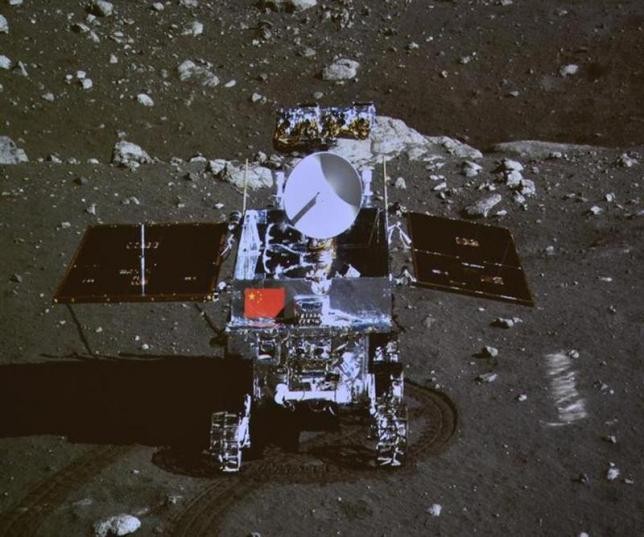China is set to launch a probe to Mars in 2020, which will arrive on the red planet the following year, according to aerospace expert Ye Peijan, the Xinhua News Agency reported.
"Although we are not the first Asian nation to send a probe to Mars, we want to start at a higher level," Ye, an academician at the Chinese Academy of Sciences, said.
According to Ye, parachute and reverse thrust technologies will probably be used on the Mars landing and the probe will include a lander, a rover and an orbiter. The global surveys of Mars will be conducted by the orbiter, while the entry device will land a rover on the surface.
"We have less than five years till the launch, but we are confident. The probe is being developed by the team that completed the Chang'e-3 lunar probe," Ye, also the leader of the team with the China Academy of Space Technology (CAST), said.
The report said that CAST has a 3D demonstration video which shows how the Mars probe will fly in 10 months before closing on the planet, while controllers on Earth guide it into orbit, with the orbiter and lander separating in the process. For at least a year, the orbiter will stay in orbit to take photos of key areas and monitor Mars's environment.
Experts from CAST said that the Mars lander, unlike the lunar lander of the Chang'e-3 probe, will carry a gasbag, a parachute and reverse thrust engines, which will ensure a safe landing.
Zheng Yongchun, an associate researcher with the National Astronomical Observatory, said that starting Mars exploration at a high level is a reasonable decision, which combines orbiting exploration and a roving probe into one mission.
"The best and most direct method to look for evidence of life on Mars is to explore the surface. Mars will be a key focus of China's deep space exploration in the future," Zheng was quoted as saying.
Zheng, however, said that the country needs to develop a long-life, powerful relay communication device on the orbiter, since communicating with the Mars probe is still a great challenge.
Differentiating the Mars rover from lunar rover Yutu (or Jade Rabbit), Jia Yang, deputy chief designer of the Chang'e-3 lunar probe, told Xinhua in an exclusive interview that the Mars rover will have a better autonomous capability as Mars is much further away than the moon. Mars is about 55 million kilometers to 400 million kilometres away from Earth.
"The Mars rover should be able to sense the environment, plan its route, conduct scientific exploration and detect faults autonomously. It should be a mobile intelligence," Jia said.
Jia added that ground controllers will address the communication problem since two-way signal transmissions between Mars and the Earth could take as long as 40 minutes, leaving the rover to deal with things on its own, most of the time.
The report said that in developing the Mars rover, which should be stronger than the lunar rover Yutu, Chinese space experts face several technological hurdles.
Jia added that to generate more electricity, the solar panels have to be as large as possible, considering that Mars is further from the sun than the Earth's moon.
"Although the temperature change on Mars is less drastic than that on the moon, the Mars rover still needs an 'overcoat' to keep warm," Jia said.
In addition, sandstorms, which often form on the red planet during summer, cause the solar energy to drop dramatically and Chinese space experts will design a "sleep" mode for the rover during such occasions, Jia said.
A prototype model of the Mars rover, which was displayed at the Airshow China 2014, showed that it is about 2 meters long, with six wheels. It is close to the American Mars rovers Spirit and Opportunity in size, weight and technologies. But unlike the rover Curiosity, which uses a nuclear battery, the Chinese Mars rover will use solar power.
"Exploring the red planet and deep space will cement China's scientific and technological expertise," Jia said. "The knock-on effect is that innovations and independent intellectual property rights will surge, and, as a result, China's core competence will increase, pushing development in other industries."
Jia added, "As China continues with its lunar mission, glimpsing further and further into deep space, it will play a bigger role in solving key frontier scientific questions."



























